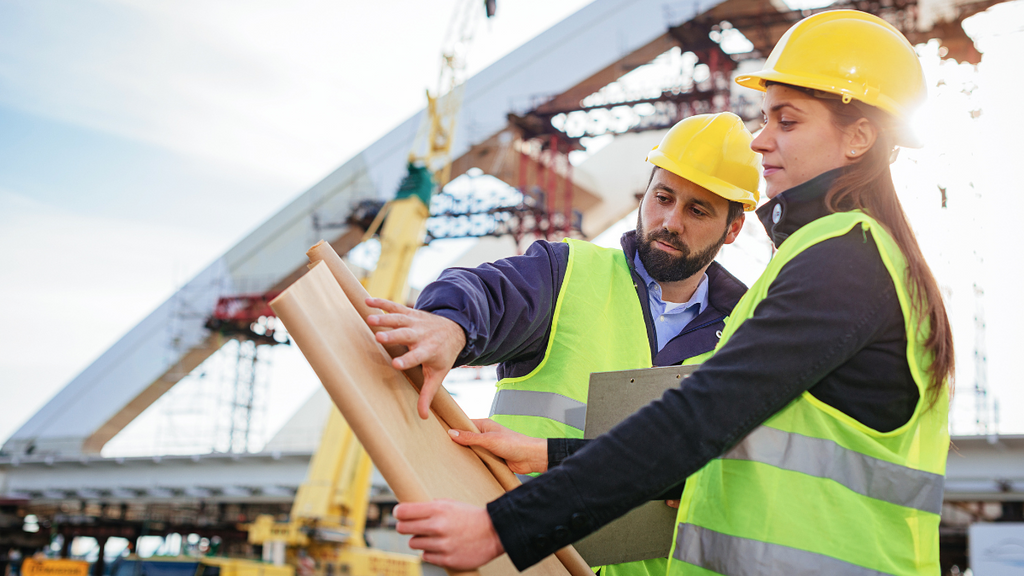Geotheta - The Facts
Geotheta - The Facts
Blog Article
Geotheta Things To Know Before You Get This
Table of ContentsHow Geotheta can Save You Time, Stress, and Money.Indicators on Geotheta You Should KnowThe 8-Minute Rule for GeothetaThe 30-Second Trick For GeothetaNot known Facts About Geotheta

They perform website investigations, collect samples, carry out lab tests, and examine data to examine the suitability of the ground for construction jobs - Tailings Engineer. Based upon their findings, geotechnical designers supply recommendations for foundation style, slope stability, maintaining frameworks, and mitigation of geotechnical hazards. They team up with various other specialists, such as designers, structural engineers, and building and construction groups, to make certain that geotechnical factors to consider are integrated right into the overall project design and implementation
By examining the actions and buildings of dirt and rock, they can determine prospective geotechnical risks such as landslides, dirt negotiation, or incline instability. Their competence helps stop failures or crashes that can jeopardize lives and property. Below are some in-depth tasks and responsibilities of a geotechnical designer: Website Investigation: Geotechnical engineers conduct website examinations to gather information on subsurface conditions.
They translate the data to comprehend the properties and behavior of the soil and rock, including their strength, leaks in the structure, compaction attributes, and groundwater problems. Geotechnical Evaluation and Style: Geotechnical designers assess the information collected during site investigations to examine the security and viability of the website for construction projects. They perform geotechnical computations and modeling to assess aspects such as bearing capability, settlement, slope security, side earth stress, and groundwater flow.
Little Known Questions About Geotheta.
Structure Style: Geotechnical engineers play a vital role in creating foundations that can securely support the intended framework. They examine the soil problems and tons requirements to identify the appropriate foundation kind, such as shallow foundations (e.g., grounds), deep structures (e.g (https://www.huntingnet.com/forum/members/geotheta.html)., piles), or specialized techniques like soil enhancement. They take into consideration aspects such as negotiation limits, bearing capacity, and soil-structure interaction to establish ideal foundation designs
They assess construction strategies, screen site tasks, and conduct field inspections to confirm that the style recommendations are adhered to. If unanticipated geotechnical issues occur, they assess the scenario and give referrals for removal or adjustments to the style. Risk Analysis and Mitigation: Geotechnical designers examine geotechnical hazards and threats associated with the task site, such as landslides, liquefaction, or dirt erosion.

Collaboration and Communication: Geotechnical designers work carefully with other professionals involved in a task, such as architects, structural designers, and building and construction teams. Reliable communication and partnership are vital to integrate geotechnical considerations into the total task layout and building and construction process. Geotechnical engineers give technical know-how, answer inquiries, and ensure that geotechnical needs are met.
What Does Geotheta Mean?
Here are some types of geotechnical designers: Structure Designer: Structure designers focus on creating and analyzing structures for frameworks. They evaluate the soil problems, load requirements, and site attributes to establish one of the most appropriate structure kind and layout, such as shallow foundations, deep foundations, or specialized techniques like stack foundations.
They examine the aspects influencing incline stability, such as soil properties, groundwater problems, and incline geometry, and create techniques to stop slope failures and mitigate risks. Quake Designer: Quake engineers concentrate on analyzing and designing structures to stand up to seismic pressures. They evaluate the seismic risk of a site, assess soil liquefaction potential, and develop seismic layout standards to guarantee the safety and security and durability of structures during earthquakes.
They perform area testing, gather examples, and assess the accumulated data to define the soil homes, geologic formations, and groundwater problems at a website. Geotechnical Instrumentation Designer: Geotechnical instrumentation engineers concentrate on tracking and determining the actions of dirt, rock, and structures. They install and keep instrumentation systems that keep track of variables such as soil settlement, groundwater degrees, slope movements, and architectural displacements to assess efficiency and offer very early warnings of possible concerns.
The Only Guide for Geotheta
They perform tests such Geo Tech Engineer as triaxial tests, loan consolidation tests, direct shear tests, and leaks in the structure examinations to gather data for geotechnical analysis and style. Geosynthetics Designer: Geosynthetics designers concentrate on the layout and application of geosynthetic materials, such as geotextiles, geogrids, and geomembranes. They use these materials to boost soil security, reinforce slopes, supply water drainage services, and control disintegration.
They tend to be investigative people, which means they're intellectual, reflective, and inquisitive. They are curious, methodical, logical, logical, and rational. Some of them are additionally social, implying they're kind, generous, participating, person, caring, handy, compassionate, tactful, and pleasant - Consulting Engineer.
In the workplace setting, geotechnical designers utilize specialized software devices to do estimations, produce designs, and evaluate information. They prepare records, review job requirements, connect with customers and employee, and coordinate project tasks. The workplace setting supplies a favorable environment for research, evaluation, and cooperation with other specialists entailed in the project.
The Buzz on Geotheta
They frequently check out job websites to conduct website examinations, analyze geotechnical problems, and gather data for evaluation. These visits include taking a trip to different areas, sometimes in remote or challenging surfaces. Geotechnical designers may execute soil tasting, conduct examinations, and display building tasks to guarantee that the geotechnical facets of the task are being carried out appropriately.
Geotechnical designers likewise operate in specialized geotechnical laboratories. In these facilities, they carry out experiments, do examinations on dirt and rock examples, and evaluate the engineering residential properties of the products. Geotechnical lab designers function extensively in these atmospheres, handling testing equipment, operating instruments, and taping data. They work together with various other laboratory personnel to make certain exact and trusted screening results.
Report this page